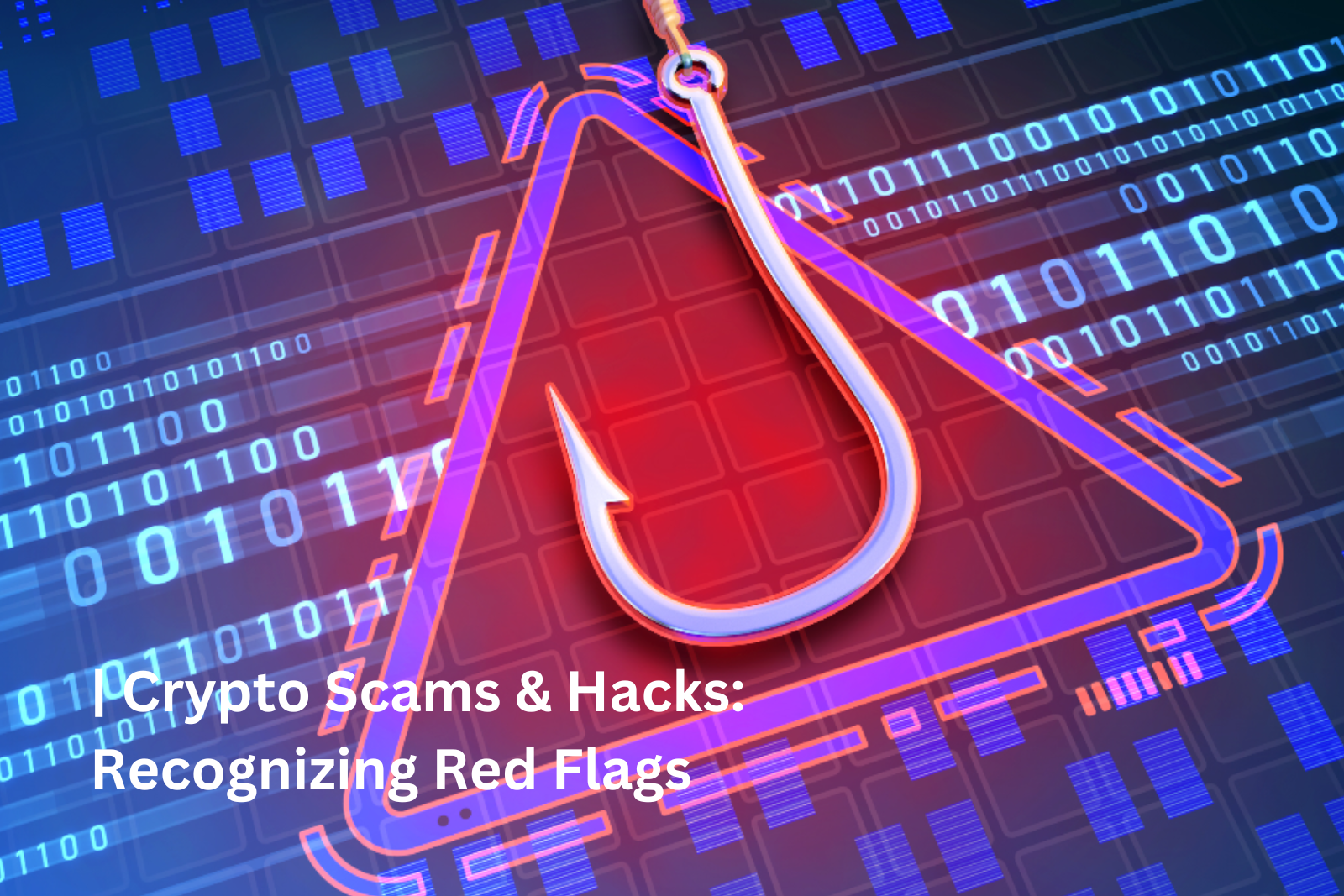
The cryptocurrency market has revolutionized the financial landscape, offering decentralization, security, and potential for high returns. However, its rapid growth has also attracted scammers and hackers seeking to exploit unsuspecting investors. In 2023 alone, billions of dollars were lost to crypto scams and security breaches. To protect your digital assets, it’s essential to recognize red flags and adopt best practices for securing your investments.
Common Types of Crypto Scams
1. Phishing Attacks
Phishing is one of the most common crypto scams. Attackers create fake websites, emails, or messages that mimic legitimate crypto platforms to steal login credentials, private keys, or seed phrases.
Red Flags:
- Emails or messages urging urgent action, such as verifying an account.
- Suspicious links that look similar to legitimate sites but have misspellings (e.g., “bìnance.com” instead of “binance.com”).
- Requests for private keys or passwords.
How to Avoid:
- Always double-check URLs before logging in.
- Enable two-factor authentication (2FA) on all crypto accounts.
- Never share your private keys or seed phrases with anyone.
2. Ponzi and Pyramid Schemes
Ponzi and pyramid schemes promise high returns with little to no risk. They rely on new investors’ funds to pay older investors, collapsing when recruitment slows.
Red Flags:
- Guaranteed high returns with no risk.
- Lack of transparency about how profits are generated.
- Aggressive recruitment tactics.
How to Avoid:
- If it sounds too good to be true, it probably is.
- Verify the legitimacy of a project by checking its whitepaper, team, and roadmap.
- Invest in projects that have a clear, sustainable revenue model.
3. Fake Initial Coin Offerings (ICOs) and Rug Pulls
Scammers create fake ICOs or pump-and-dump schemes where they hype up a project, attract investors, and disappear with the funds.
Red Flags:
- Anonymous developers with no track record.
- No working product or MVP (Minimum Viable Product).
- Excessive hype on social media without solid fundamentals.
How to Avoid:
- Research the project’s team and check if they have a verifiable history.
- Look for an audited smart contract and real use cases.
- Avoid investing solely based on influencer promotions.
4. Malicious Wallet and Exchange Apps
Scammers create fake crypto wallets or exchanges that look legitimate but steal your funds upon deposit.
Red Flags:
- Unverified apps on Google Play or Apple App Store.
- Poor reviews or complaints about lost funds.
- Requests for private keys or full wallet access.
How to Avoid:
- Only download wallets and exchanges from official sources.
- Use reputable platforms with a track record of security.
- Enable multi-signature authentication where possible.
5. Social Engineering and Impersonation Scams
Hackers impersonate well-known figures, customer support agents, or project teams to deceive investors into sending funds.
Red Flags:
- Requests for funds or private information via social media.
- Fake giveaways promising to double your crypto if you send funds first.
- Fake customer support accounts offering “help.”
How to Avoid:
- Always verify accounts and official communication channels.
- Never send crypto to unverified addresses.
- Report and block scam accounts.
Best Practices to Protect Your Crypto Assets
1. Use Secure Wallets
- Store funds in hardware wallets (e.g., Ledger, Trezor) for maximum security.
- Use a combination of hot (online) and cold (offline) wallets to minimize risks.
- Never store large amounts of crypto on exchanges.
2. Enable Multi-Factor Authentication (MFA)
- Use 2FA (Google Authenticator, Authy) instead of SMS authentication.
- Enable biometric security on mobile wallets.
3. Verify Before You Invest
- Research a project thoroughly before investing.
- Check audits, roadmaps, and community engagement.
- Avoid investments promoted by anonymous sources or influencers.
4. Stay Updated on Security Threats
- Follow trusted crypto security sources for updates.
- Join online communities that discuss scams and fraud prevention.
- Regularly review your security settings.
5. Be Cautious of High-Pressure Tactics
- Scammers create a sense of urgency to force quick decisions.
- Take your time to research before making financial commitments.
Conclusion
Crypto scams and hacks continue to evolve, making vigilance crucial for investors and traders. By recognizing red flags and implementing strong security practices, you can significantly reduce the risk of losing your assets. Always remember: if something seems too good to be true, it probably is. Stay informed, stay secure, and invest wisely in the crypto space.












